You never really feel like you’ve arrived in Boracay until you see its famous white beach.
True to the photos news outlets and netizens have been quick to share the moment the island reopened, the water is clearer and bluer, the shore much wider. But before arriving to this view, there is a lot you have to go through.
First, a refresher: The most popular beach destination in the country has been in the center of the news for most part of the year not because of international accolades or new tourism initiatives but because it was called a “cesspool” by President Rodrigo Duterte. This then prompted the island’s six-month closure.
Boracay reopened to the public on Oct. 26, and while media and tourists claim that the beach has reverted to its almost pristine state, there’s more to the island now than meets the eye.
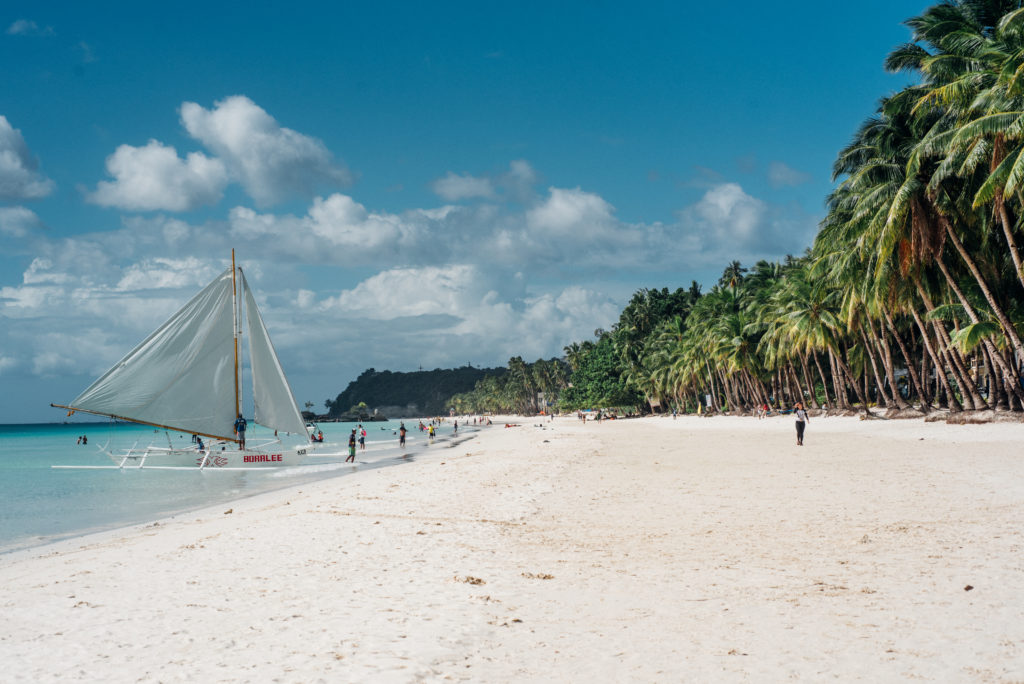
Expectation vs. reality
A few days before Boracay’s reopening, some residents had shared photos and videos taken from the streets beyond the beach, which showed excavations, heavy construction equipment, potholes, and tricycles bobbling through rough, uneven roads. It was the same scene a little more than a week after.
The Department of Tourism (DOT) had already given a fair warning a month prior. Discussing the island’s “soft opening,” DOT Secretary Berna Romulo-Puyat said that by Oct. 26 “we’ll have only the major roads built, but definitely, we [will] see complete rehab maybe by December 2019,” the Inquirer reports.
Boracay Foundation Inc. (BFI) vice president Diony Salme says that they had expected faster development with the total rehabilitation, especially with regard to the roads. “Nag-suggest kami noon na kung pwede dalawang shifting ang trabahador para mas mabilis, para by the time na darating ang Oct. 26, halos tapos na.”
Salme and several other Boracay locals and business owners have long been pushing for the island’s rehabilitation but admits the sudden closure came as a shock.
“We have been saying it for several meetings already, that rehabilitation is welcome, but not closure,” Salme says. BFI, of which Salme was also a previous president, is a 20-year-old organization of resorts and establishments that advocate the preservation of the environment.
With tourism being the island’s main industry, it’s understandable why the foundation clamored for a phase-by-phase rehabilitation instead of a total closure.
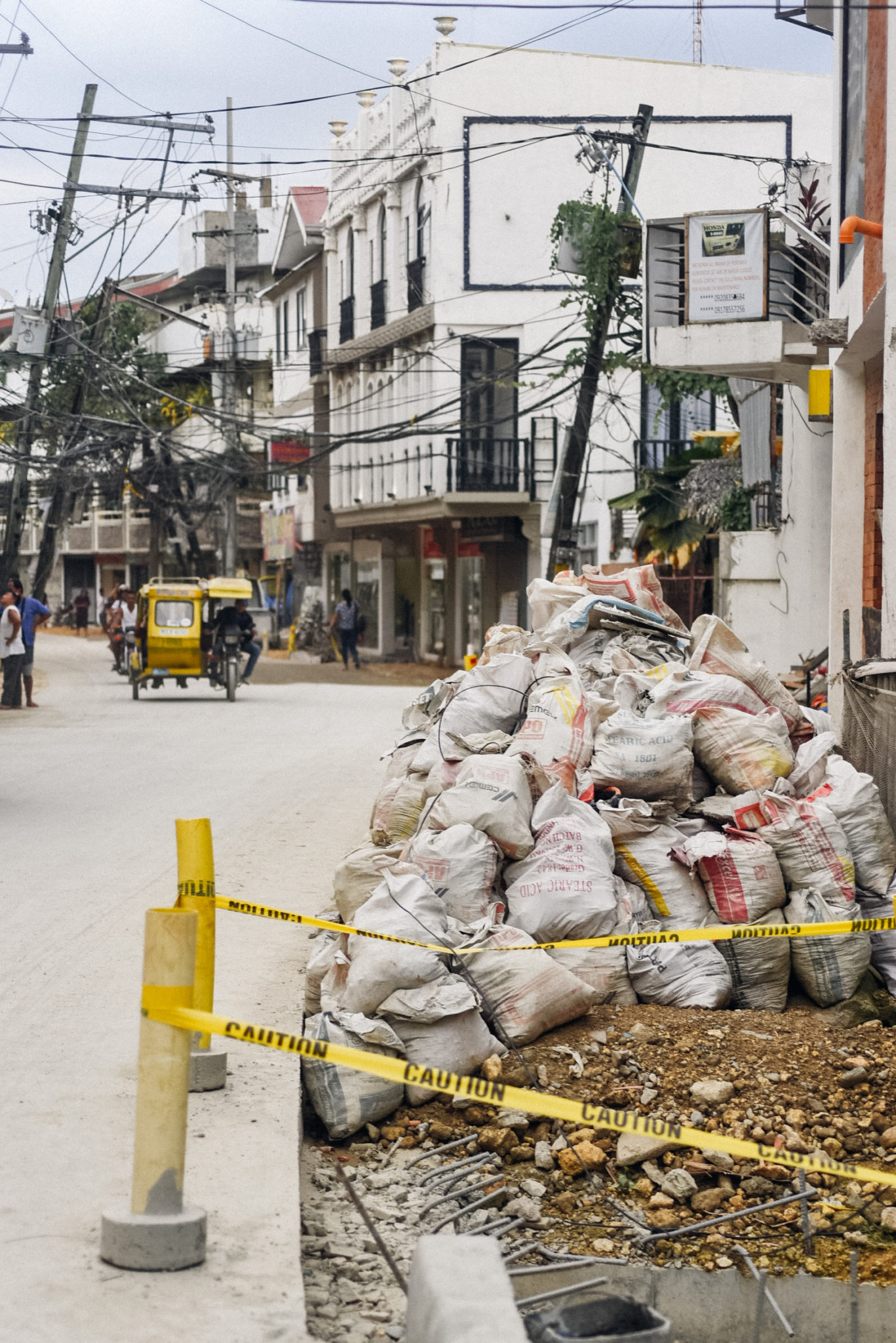
Behind the scenes in Boracay
There have already been divided opinions when Duterte first called attention to the island. Reports say that back in February, he had ordered Department of Environment and Natural Resources (DENR) Secretary Roy Cimatu to come up with a solution to Boracay’s problems, which include traffic congestion, flooding, garbage, and overcrowding, within six months.
And yet President Duterte’s decision to totally close the island came as a surprise even to cabinet members. While his recommendation was supported by the Department of Interior and Local Government (DILG), DENR, and DOT, other departments such as the Department of Trade and Industry recommended doing rehabilitation in phases.
“Kung kukunin natin ’yung word niya, word per word, sabi niya, kung hindi niyo ayusin ang Boracay within six months, ipapasara, parang ganoon eh,” Salme says. “So unang isip namin, bibigyan pa kami ng six months. ’Yun pala biglaan, ’yun pala, isasara sa loob ng six months.”
Many of the rules and policies being implemented now are based on existing laws and ordinances, confirmed Jason Yap Talapian. The difference now is that they are actually put into effect thoroughly to avoid slip-ups that caused the same problems in the first place.
This roundabout “coordination” was also noted by the local government, down to the barangay level. Jason Yap Talapian, the current barangay captain of Barangay Balabag, which covers a stretch of White Beach, notes that before President Duterte even made his official declaration, other agencies and departments were already making their own pronouncements.
“Hindi pa nga nag-de-declare si Presidente Duterte, pinakansela na ng DOT ’yung mga flight dito papuntang Boracay. Hanggang ’yun na nga, nagsabayan ’yung mga iba-ibang sector na rin ng [national government].”
This caused confusion at the grassroots level. Both Talapian and Salme agree that there have been instances in which information about Boracay had been released publicly through the media when they themselves have yet to hear about it.
Among these were the proposed rules to be implemented on the island post-closure. Plans of access cards or bracelets to monitor the number of tourists or to limit flights to Caticlan and Kalibo had been reported.
When asked about plans to limit people entering the island, Talapian says they have yet to get actual data on it. “’Yun ang problema dito, hindi namin alam pa [rito] sa barangay, pero sa TV lumabas na. Kung ano sabihin nila sa TV, lalo na kung taga-Maynila ka, okay na ’yun, totoo na ’yun sa kanila. Kawawa ang Boracay noon.”
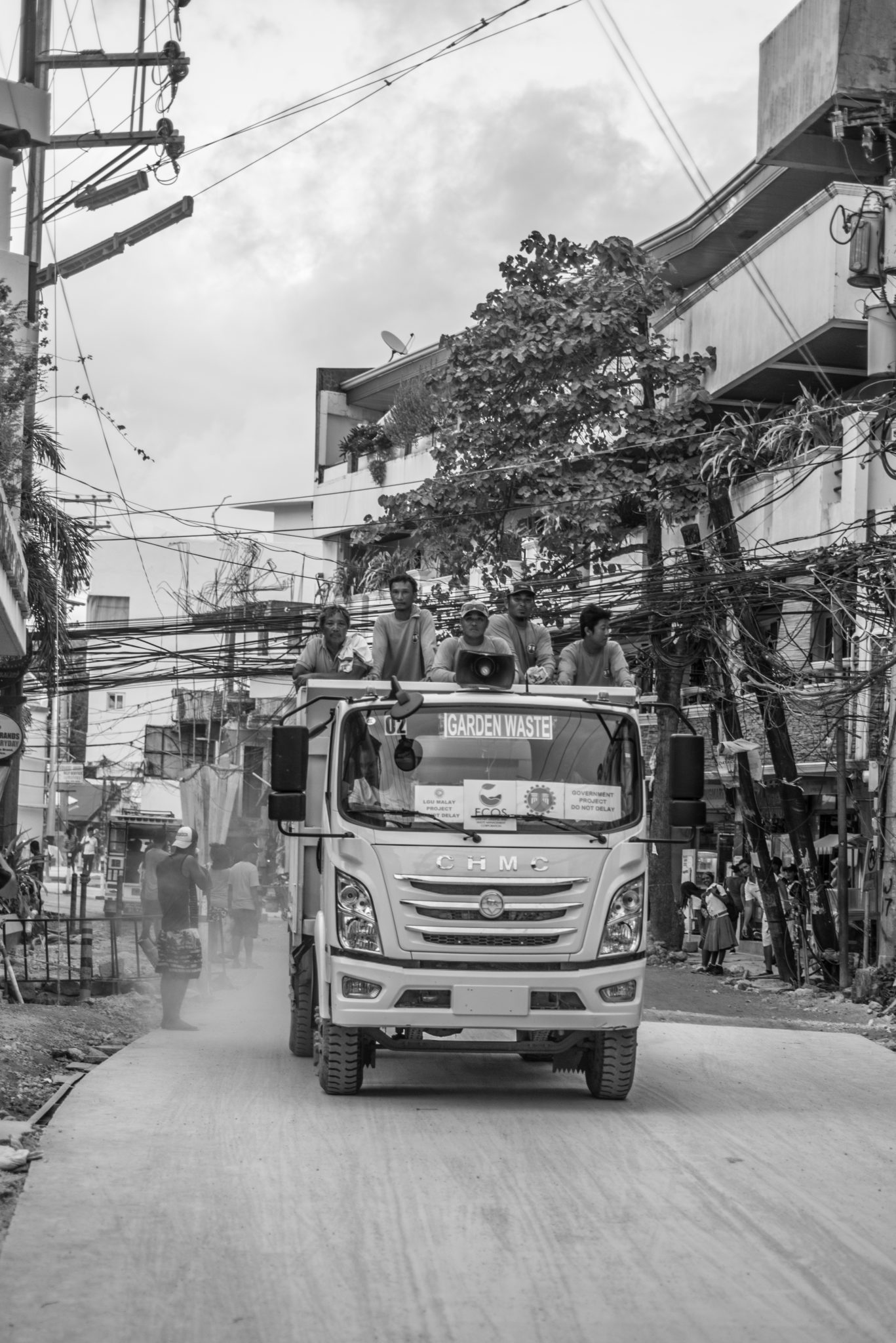
On the ground
Although the exact methods to keep the island’s population within its carrying capacity at any given time have yet to be finalized, other environmental efforts are already in place.
To preserve the cleanliness of the beachfront, umbrellas, beach beds, tables and chairs, and vendors have already been prohibited. Beach parties are also no longer allowed, along with the consumption of alcoholic beverages and smoking.
Sets of trash bins, labeled for food waste, recyclables, and non-recyclables are also strategically placed on the beach. Talapian also says that the barangay monitors solid waste management within every sitio. “May naka-assign diyan, so lahat ng bahay merong garbage bins o sako. Iniikot talaga ’yan ng monitoring, [to ensure proper disposal and segregation].”
Despite the prominent presence of these trash bins, small pieces of litter were still found along the beach. Even more so along the main roads where these waste disposal bins are less common. Officials from the national government have expressed their dismay when, after Boracay’s reopening, trash was found littered along the beach.
The “Oath to a Better Boracay,” they claim, states the guidelines and rules that tourists must keep in mind on the island. Tourists are allegedly provided copies of the oath upon their arrival. [Editor’s note: There were no such oaths in sight though, based on our team’s personal experience]
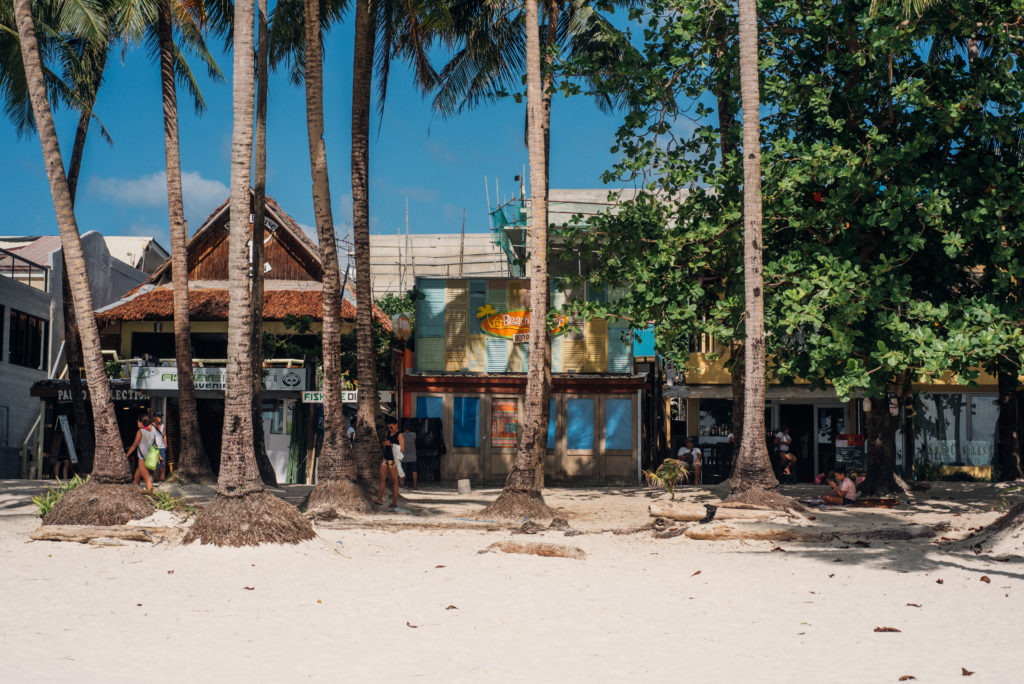
Opening up
Many of the rules and policies being implemented now are based on existing laws and ordinances, confirms Talapian. The difference is that they are actually put into effect thoroughly to avoid slip-ups that caused the same problems before.
The more stringent implementation of the ordinances initially didn’t sit well with owners of establishments, with many asking why they had to provide certain documents or requirements now, when previously this wasn’t the case. While reapplication for permits is done annually, it is only now after the closure that local government has been strict in requiring complete documentation before the process begins.
“Dati kasi nagkaproblema na minsan nagtatago ’yung mga owner,” Talapian says. “Sasabihin nila okay na ’yung requirements nila pero [hindi]. Ngayon pati LGU (local government unit) nadadamay na. Minsan nagsisinungaling ‘yung mga resort owner, so kami [ang nananagot].”
While Boracay establishments are slowly getting back on their feet, with new sets of resorts, restaurants, and shops getting certified and accredited each day, the challenges they face go beyond just securing a permit.
The mayor of the municipality of Malay, Aklan, of which Boracay is part of, is currently suspended because he had allegedly approved permits to be issued to a number of establishments that were noncompliant with the requirements and standards imposed by the government, especially with regard to sewerage, waste management, and safety certifications.
The National Bureau of Investigation (NBI) also recently added to the list of local executives charged for violation of environmental laws in Boracay. Aside from the current, suspended mayor Ceciron Cawaling, his predecessor John Yap was also charged. According to a report by the Inquirer, three resorts were also included in the complaint. Those charged by the NBI face cases in relation to graft and declaration of taxes as well as pollution and “licensing of unlawfully registered or illegally occupied forest lands.”
While Boracay establishments are slowly getting back on their feet, with new sets of resorts, restaurants, and shops getting certified and accredited each day, the challenges they face go beyond just securing a permit.
Along with the ban on parties were the removal of lights along the White Beach path. What was once a bright and colorful strip is now a dark trail dotted only by the lights of individual tourists walking with their flashlights, and the occasional storefront light.
Restaurants and establishments along Boracay’s main roads have to deal with unpaved roads, not to mention dust and noise pollution around and within their spaces brought about by wide-scale road constructions. And because of these roadworks, establishments located in areas farther away from the beachfront enjoy significantly less traffic.
For beachfront restaurants, the problems come after sunset. Along with the party bans were the removal of lights along the White Beach path. What was once a bright and colorful strip is now a dark trail dotted only by the lights of individual tourists walking with their flashlights and the occasional storefront light.
“Ang problema naman ngayon, maraming magnanakaw sa beach,” Talapian says, explaining the effects of the national government’s directive to remove the lights along the beach. “Hindi nila alam marami ring nasa ilalim ng madilim, nakatago sa dilim.”
For now, the local government’s solution is to have roving police officers and tanod round the clock.
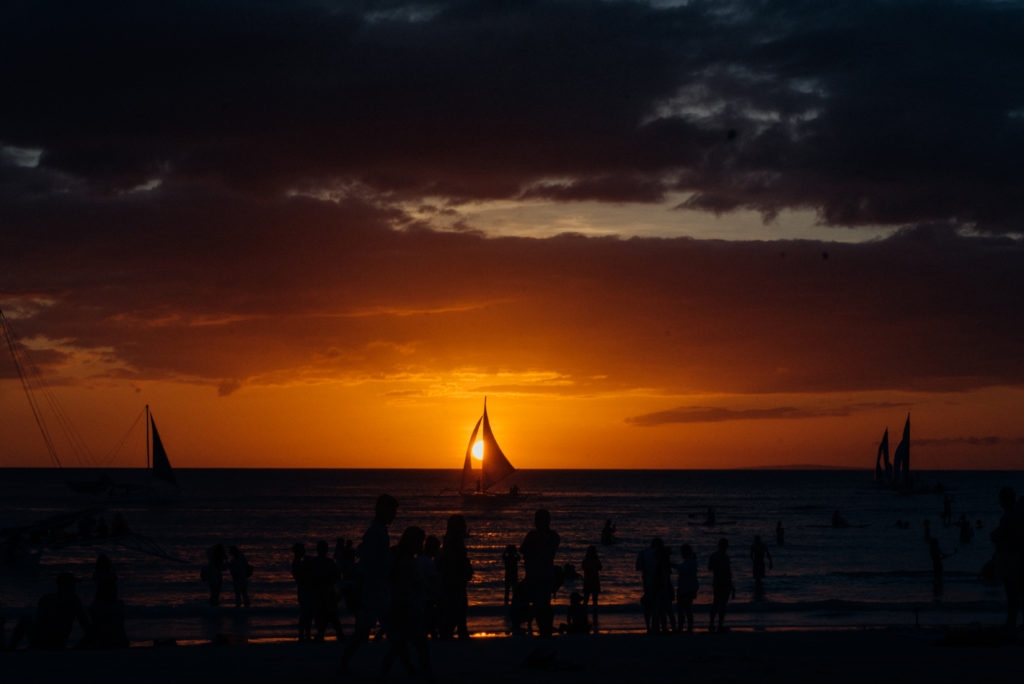
The sole winner
All things considered, there is only one beneficiary in this entire cesspool ordeal: the environment.
“Talo lahat doon,” Salme says. Businessmen, with their closed establishments, had no sales. Employees didn’t have salaries. Suppliers had no one to supply goods to. “Ang naka-benefit lang dahil sa rehabilitation… tayo siguro, na at the end of the day, mas maganda na ang Boracay.”
Still, Salme stands by many locals’ common sentiment that rehabilitation would still have been possible without closure. On the side of local officials, Talapian says, the closure has resulted in a stricter implementation of rules and policies. “Sa ngayon, may benefit ’yung closure kasi naayos lahat, ’yung mga sewer natin… Para hindi na maulit muli ang nangyari dito sa Boracay, mahigpit kami ngayon as officials dito.”
While there’s much work to be done in terms of infrastructure, locals are also taking things into their own hands. Talapian shares that since the closure, beach and sitio cleanups have been more regular. Barangay officials, staff, and volunteers conduct cleanups every Saturday. More local programs are also in the works, specifically to address tourist concerns over the now-banned beach activities.
Ultimately, Boracay has become a case study for sustainable tourism. Is political will all that’s needed to get things done? The island’s current situation— both on the beach and in the towns beyond it—is a clear statement.
Originally published in F&B Report Vol. 15 No. 6













































